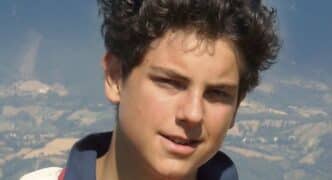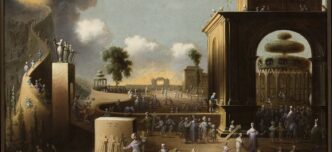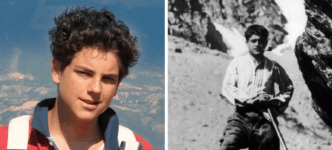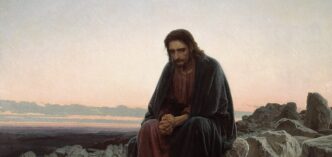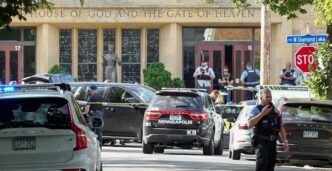In perhaps the most famous sentences from St. Augustine’s magisterial fourth-century memoir, “Confessions,” the bishop of Hippo tells Our Lord, “You awaken us to delight in your praise; for you have made us for yourself, and our heart is restless until it rests in you.” But what is often overlooked are the sentences that precede these famous words. Our heart is restless, suggests St. Augustine, because we “carry around our mortality; we carry around the evidence of our own sin.” Our human hearts are heavy with sin and mortality, and this is precisely the reason that our hearts are restless until they find their rest in God. The restless heart is encumbered by sin and mortality, but that is not its natural state. The fallen heart cries out to the one — the Only One — who can truly give it rest.
But we also understand that God himself initiates the call. It is the very heart of God that first beckons us toward himself, such that we even have the capacity to call in supplication and praise. This is reflected in Pope Francis’s 2024 encyclical, Dilexit Nos (“He Loved Us”). In a section called “The World Can Change, Beginning with the Heart,” the late pope says:
Let us never forget that our hearts are not self-sufficient, but frail and wounded. They possess an ontological dignity, yet at the same time must seek an ever more dignified life. The Second Vatican Council points out that “the ferment of the Gospel has aroused and continues to arouse in human hearts an unquenchable thirst for human dignity.” Yet, to live in accordance with this dignity … we need the help of God’s love. Let us turn, then, to the heart of Christ, that core of his being, which is a blazing furnace of divine and human love and the most sublime fulfilment to which humanity can aspire. There, in that heart, we truly come at last to know ourselves and we learn how to love. (No. 30)
A meditation on longing
I have been reminded of these thoughts recently in light of the 50th anniversary of Bruce Springsteen’s breakthrough album, “Born to Run,” released in August 1975. “Born to Run” is the first of three consecutive albums that I consider to be the heart of Springsteen’s entire opus, representing the most creative period of his illustrious career. With “Darkness on the Edge of Town” (1978) and “The River” (1980), Springsteen firmly established himself as a global superstar, drawing comparisons to such luminaries as Bob Dylan.
“Born to Run” is Springsteen’s third album, but it was almost never made. His first two efforts, “Greetings from Asbury Park, N.J.” and “The Wild, the Innocent & the E Street Shuffle” (both released in 1973), received relatively positive critical reviews, but were not commercially successful. “Born to Run” was perhaps his last chance to make an album that would sustain his career as a singer-songwriter. And, of course, it did. “Born to Run” was a monumental commercial success, second only to 1984’s “Born in the U.S.A.” in Springsteen’s worldwide sales.
“Born to Run” is a sustained meditation on the restless heart about which St. Augustine wrote in his great spiritual memoir. The album is a chronicle of the longing heart, eager to break away from the status quo of heartbreak and disappointment and searching desperately for fulfillment and contentment. Whereas St. Augustine’s search took him from the deserts of North Africa to the distractions of Rome, to conversion in Milan, and then back to the North African desert, Springsteen’s characters search along the highways, avenues and backstreets of working class central New Jersey. Restlessness of heart knows no place or time. It is the perennial human condition.
Big dreams and small prospects
Each track is a variation on the theme of longing for something better than the loneliness experienced by the songs’ characters, beginning with the opening track (my favorite Springsteen song), “Thunder Road”: “Roll down the window/And let the wind blow back your hair/Well, the night’s busting open/These two lanes will take us anywhere/We got one last chance to make it real/To trade in these wings on some wheels/Climb in back, heaven’s waiting down on the tracks.” And concluding the song, the narrator pleads, “So Mary, climb in/It’s a town full of losers/I’m pulling out of here to win.”
In “Meeting Across the River,” a small-time hustler is preparing to cross the Hudson River into New York to make some kind of shady deal with a big-time player. The narrator is in such desperate straits that he needs a ride from a flunky whom he is otherwise reluctant to have along with him. “Hey, Eddie, this guy, he’s the real thing/So if you want to come along, you gotta promise you won’t say anything/’Cause this guy don’t dance/And the word’s been passed this our last chance.” Big dreams and small prospects characterize this song — and, like young St. Augustine, looking for redemption where only perdition can be found.
Of course, the heart of “Born to Run” is its title track, which Springsteen described as nothing more than a desire to escape what he considered to be the seat of his oppression, his hometown of Freehold, New Jersey: “It’s a death trap, it’s a suicide rap/We gotta get out while we’re young/’Cause tramps like us, baby we were born to run.”
In search of salvation
As with “Thunder Road,” the narrator of “Born to Run” is beseeching a girl to break away with him to something — anything — else: “Oh, someday girl, I don’t know when/We’re gonna get to that place/Where we really want to go, and we’ll walk in the sun/But ’til then, tramps like us/Baby, we were born to run.” These are the words of a restless heart, yearning for an escape from anxiety and fear, driving toward something — anything — that might offer salvation.
But the songs are only about longing, with neither a clear object nor the means to find it. “Well now, I’m no hero, that’s understood,” explains the narrator in “Thunder Road.” “All the redemption I can offer, girl, is beneath this dirty hood.” There is no resolution for the restless hearts in “Born to Run.”
Bruce Springsteen was raised as a Catholic, and he still calls himself a Catholic. In his memoir, also called “Born to Run,” he wrote that “Catholicism seeped into your bones.” In Catholicism, “there existed the poetry, danger and darkness that reflected my imagination and my inner self,” he continued. “It has walked alongside me as a waking dream my whole life.” The Catholic faith of his youth is how Springsteen learned, however imperfectly and haltingly, that the heart is restless until it finds rest in its proper place. The restless hearts of the album “Born to Run” never found their rest. Restless hearts are not at home until they rest with the God who created them. It was as true 1,600 years ago as it was 50 years ago as it is today.


